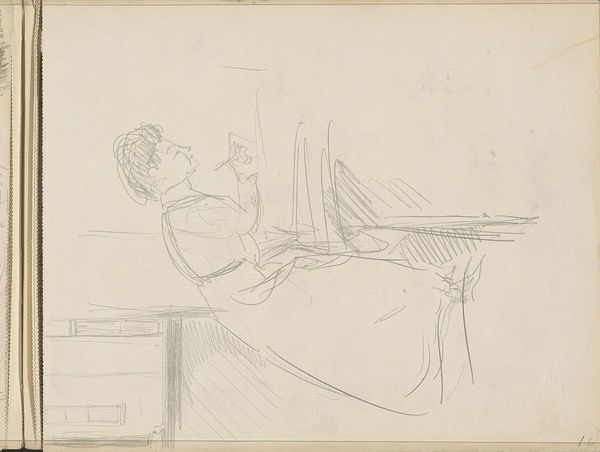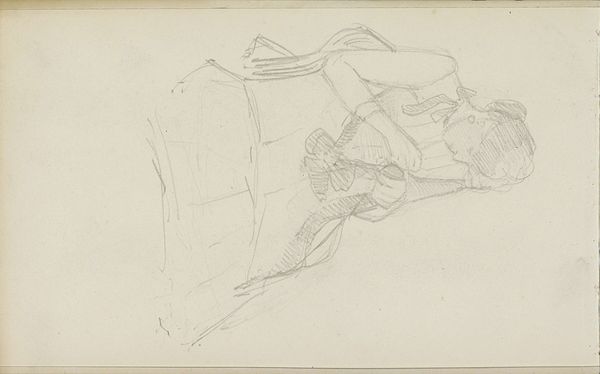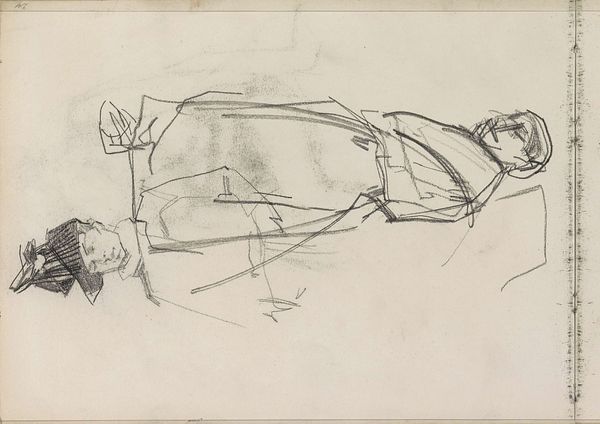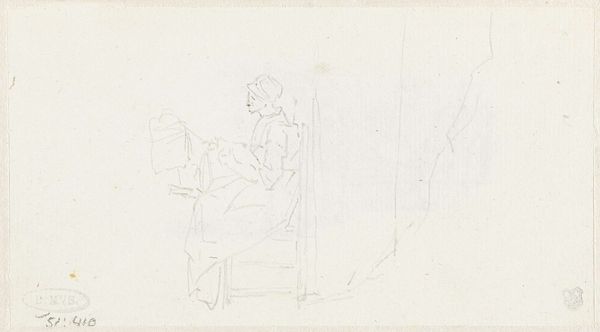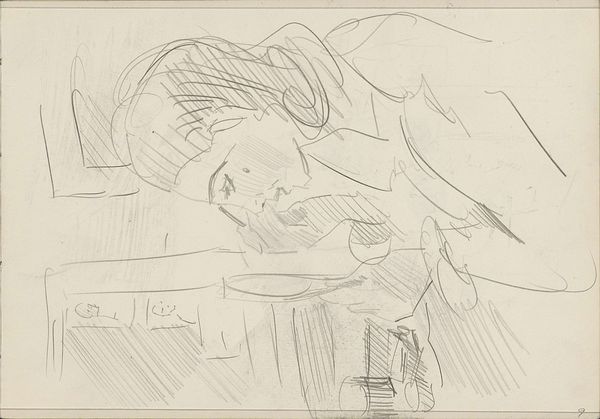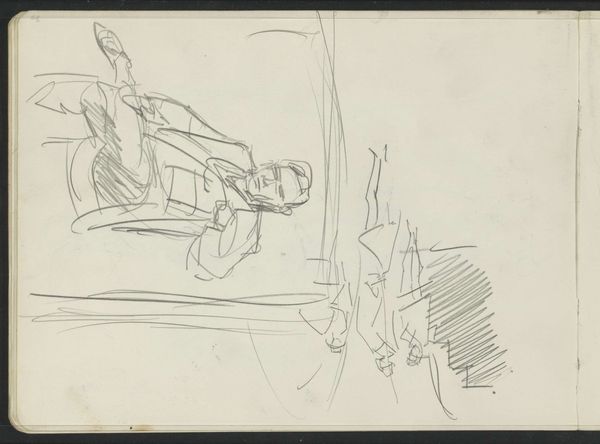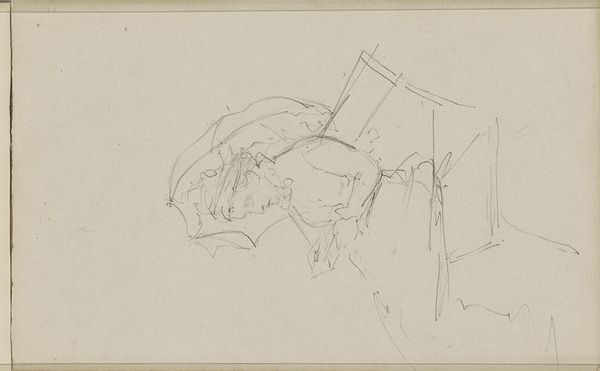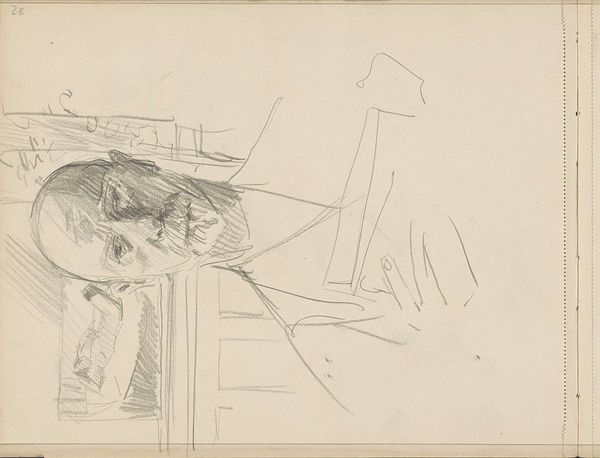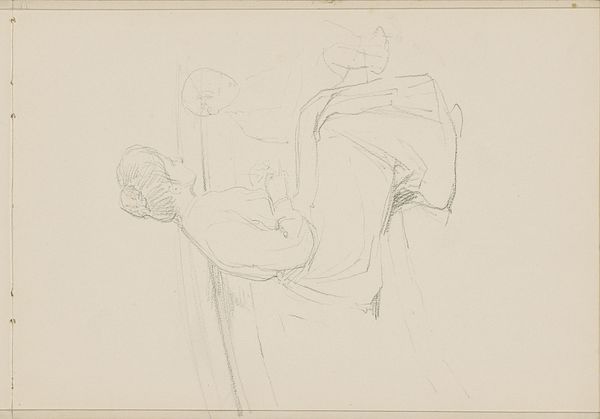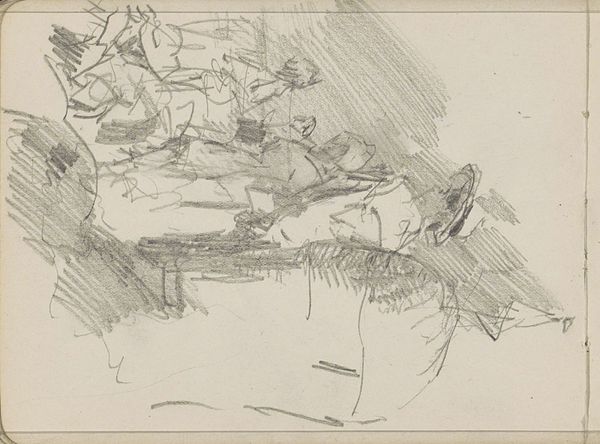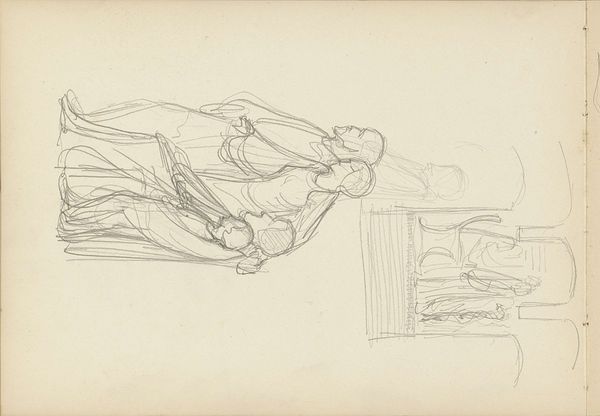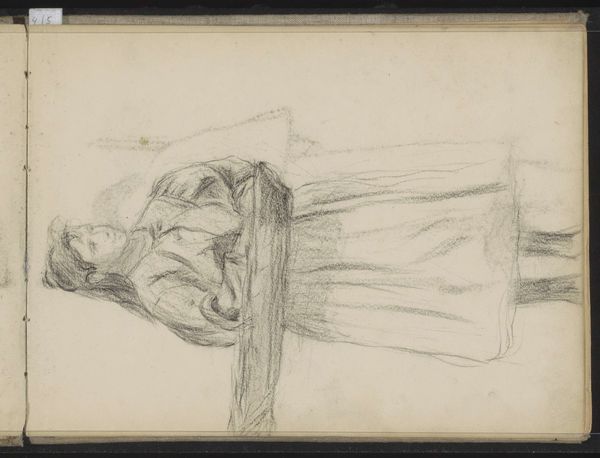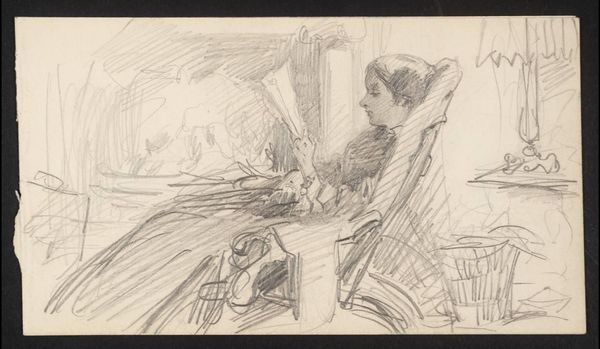
drawing, pencil
#
portrait
#
drawing
#
dutch-golden-age
#
pencil sketch
#
child
#
pencil
#
genre-painting
#
realism
Copyright: Rijks Museum: Open Domain
Curator: Jozef Israëls, working somewhere between 1834 and 1911, captured this moment in a simple pencil sketch entitled “Kind dat een kan omhoog houdt bij een venster”, or “Child Holding a Jug Up to a Window.” Editor: There’s a raw, almost dreamlike quality to it, isn't there? A fragility in those light lines, like the moment itself could dissolve any second. What do you make of it? Curator: The beauty in Israëls’ work, especially here, lies in his raw depiction of everyday life. This piece exists within the broader context of 19th-century Realism and the social concerns prevalent at that time. Editor: Absolutely. You feel this tenderness in the way he sketches the child's face and gesture; there is an immense focus on this singular instant of human experience. The act of holding a jug to a window is simultaneously mundane and mysterious; and somehow he has immortalized it. Curator: He captured a sense of yearning, don’t you think? The light source, coming from outside the frame, creates a liminal space. We’re invited to contemplate the child’s inner world against the backdrop of broader socio-economic realities of that era. Israëls’ focus on the vulnerable places within genre painting provided a platform for discussing societal inequality. Editor: Yearning… that's it exactly! And maybe, a hint of childish hopefulness? We all chase the light in our own way, I suppose, even when it seems just beyond our grasp. You've made me think about how art, at its core, often wrestles with themes of aspiration. Curator: The child and jug might also symbolize resourcefulness amidst scarcity, reflecting Israëls’ own empathetic social awareness. We must acknowledge that representing the experiences of marginalized communities humanizes the lives of real people within complex societal circumstances. Editor: Ultimately, to me, this drawing, just a casual moment rendered in simple strokes, transcends its historical context. It becomes an ode to everyday human life, captured through the fleeting act of holding a jug to a window, no matter how mundane that appears. Curator: By viewing Israëls' pencil sketch through lenses that engage questions of gender, class, and representation, we have a richer understanding of art history and the contemporary moment. Editor: Yes. And on the flip side, perhaps that's how we unlock art's potential: by remembering it can reflect both life's brutal realities, and those sweet moments in which the soul seeks light.
Comments
No comments
Be the first to comment and join the conversation on the ultimate creative platform.
